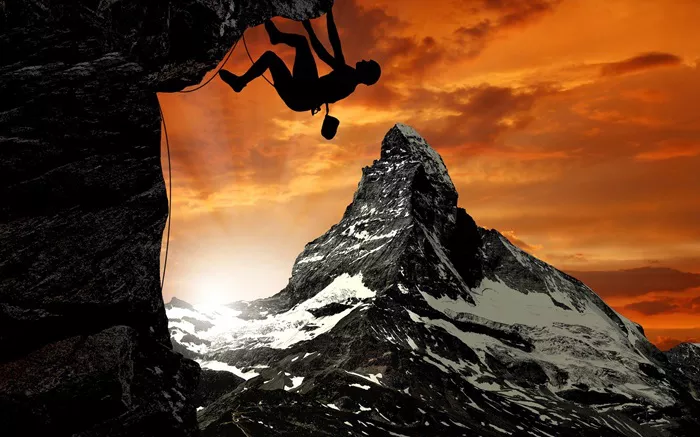Indiana’s prohibition on rock climbing is a multifaceted issue that stems from various legal, environmental, and safety concerns. This article will explore the specific reasons behind the restrictions on climbing in Indiana, providing a comprehensive understanding of the state’s stance on this popular extreme sport.
Overview of Rock Climbing in Indiana
Rock climbing is an exhilarating activity that attracts many enthusiasts across the United States. However, in Indiana, engaging in this sport is largely illegal on public lands. The state has a limited number of designated areas where climbing is permitted, such as Muscatatuck Park and parts of Hoosier National Forest. Despite these exceptions, the overall landscape for climbers remains challenging due to stringent regulations and prohibitions.
Reasons for the Prohibition of Rock Climbing in Indiana
1. Legal Restrictions
The primary reason rock climbing is prohibited in many areas of Indiana relates to legal frameworks governing public lands. Most public lands in Indiana do not allow climbing unless explicitly stated otherwise. This legal ambiguity creates a situation where climbers are often left uncertain about where they can legally climb.
Public Land Regulations: The Indiana Department of Natural Resources (DNR) maintains strict rules regarding the use of state parks and public lands. These regulations are designed to preserve natural landscapes and protect wildlife habitats. Climbing is viewed as a potentially disruptive activity that could lead to environmental degradation.
Lack of Local Climbing Organizations: Unlike other states with thriving climbing communities, Indiana lacks a local climbing organization that advocates for climbers’ rights and works with land managers to establish climbing areas. This absence has resulted in limited dialogue between climbers and regulatory bodies, further complicating efforts to legalize more climbing locations.
2. Environmental Concerns
Environmental protection is a significant factor influencing climbing regulations in Indiana. The state is home to diverse ecosystems that require careful management to maintain their integrity.
Wildlife Protection: Many climbing areas are also critical habitats for various wildlife species. Climbing activities can disturb nesting birds and other wildlife, leading to potential declines in populations. The DNR prioritizes the preservation of these habitats over recreational activities like climbing.
Erosion and Damage: Climbing can contribute to soil erosion and damage fragile rock formations. The DNR aims to minimize human impact on these natural resources by restricting access to certain areas.
3. Safety Issues
Safety is another crucial concern that underpins the prohibition of rock climbing in Indiana.
Injury Risks: Rock climbing inherently carries risks, including falls and injuries from equipment failure or improper techniques. The state’s regulations aim to protect individuals from these dangers by limiting access to potentially hazardous areas without proper oversight or safety measures in place.
Emergency Response Challenges: In remote or rugged areas, accessing injured climbers can be difficult for emergency services. By restricting climbing activities, the state aims to reduce the likelihood of accidents that could strain emergency response resources.
4. Cultural Attitudes Towards Outdoor Recreation
Cultural perceptions play a role in shaping policies around outdoor activities like rock climbing.
Historical Context: Indiana has historically focused on more traditional forms of outdoor recreation, such as hiking and fishing, rather than extreme sports like rock climbing. This cultural bias can influence policymakers’ views on the importance of facilitating climbing opportunities.
Community Engagement: There has been limited community engagement or advocacy for rock climbing within Indiana’s outdoor recreation landscape. Without strong local support or demand for climbing areas, policymakers may be less inclined to relax restrictions.
5. Alternative Recreational Opportunities
Indiana offers various recreational activities that are perceived as safer or more family-friendly than rock climbing.
Focus on Other Activities: The state promotes hiking, biking, and other outdoor pursuits that align more closely with its cultural values and safety concerns. As a result, resources are often allocated towards enhancing these activities rather than expanding access for climbers.
Current Climbing Opportunities in Indiana
Despite the restrictions, there are still some opportunities for climbers within Indiana:
Muscatatuck Park: This park offers designated areas for rock climbing and is one of the few places where climbers can legally engage in the sport within the state.
Hoosier National Forest: Portions of this forest allow climbing; however, specific areas like Hemlock Cliffs remain off-limits due to environmental protections.
Conclusion
Indiana’s prohibition on rock climbing stems from a combination of legal restrictions, environmental concerns, safety issues, cultural attitudes towards outdoor recreation, and the availability of alternative activities. While there are designated areas where climbers can enjoy their passion legally, the overall landscape remains challenging for enthusiasts seeking more extensive opportunities within the state.
Related topics:
- Why Does Rock Climbing Require Muscular Endurance?
- How Many Rock Climbing Routes Are There in West Virginia
- How Long Does It Take to Get Good at Rock Climbing?

